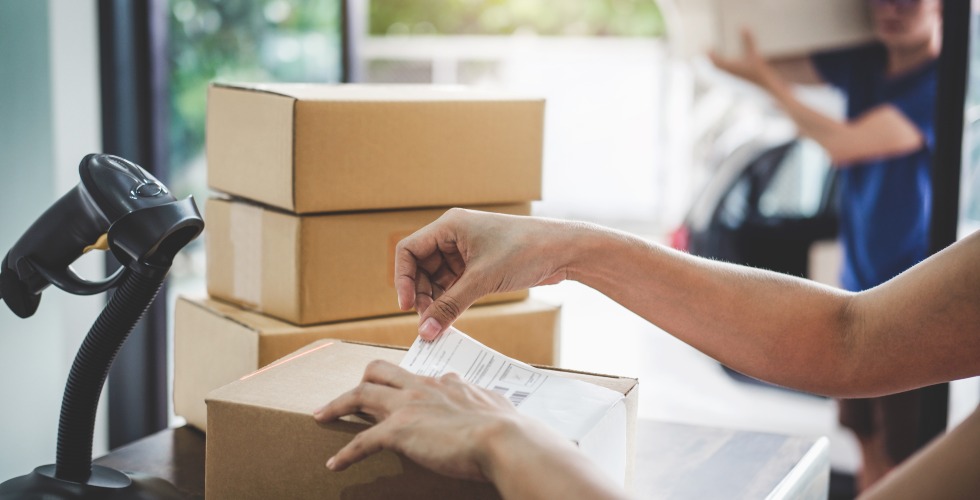The rapid and continuous growth of the fashion and beauty e-commerce sector has resulted in a fast-paced and exciting market offering benefits for retailers both large and small.
Greater numbers of online orders have naturally led to increased returns rates, which can be a challenge for retailers to handle efficiently. The complexity of managing returns has been compounded by same-day delivery, simple returns processes and Covid-19 store closures, as customers opt to buy items in various sizes to try at home before sending back, in lieu of fitting rooms.
With e-commerce transactions expected to make up 35% of total fashion retail in 2022 (Forrester), and apparel being one of the most popular cross-border purchases (Statista), it’s essential for retailers in this sector to prevent returns becoming a drain on resources and find an effective returns process that works.
How “return to sender” went wrong
For e-commerce retailers, customer satisfaction has in large part relied on faster delivery and a stress-free returns process. But as e-commerce returns rates have spiked 95% in the last 5 years (paymentsjournal), even digital giants such as Amazon are re-evaluating their strategies to minimise both the cost of returns and their impact on both business and the environment.
The fashion and beauty sectors are amongst the worst affected by returns rates, as 56% of clothing and shoes and 22% of cosmetics and health products are sent back to retailers (GlobalWebIndex). Whether the returned goods are donated, destroyed or resold, they can quickly become a headache by taking up valuable warehouse space and requiring time, staff and money to decide their final destination.
As shoppers become increasingly concerned about the environmental impact of the fashion and beauty sectors, the waste and carbon emissions caused by returns (estimated to be around 5 billion pounds of landfill waste in the US per year (voguebusiness) are just another reason why retailers need to tackle the problem of rising returns sooner rather than later.
Stopping returns at the source
Understanding why items are being sent back, and therefore identifying any customer needs which aren’t being met at the point of sale, is the key to minimising returns. Many retailers include a checklist on returns forms asking customers to share why they aren’t keeping an item:
The most common reasons for returning items include:
- defective products (59%)
- buyer’s remorse (42%)
- feeling a product was misrepresented (29%) (WBE).
For some consumers, returning products is just part of the shopping experience; 30% of UK e-shoppers deliberately over-purchase and return unwanted items, while 19% order multiple version of the same item to try at home (SaleCycle). While e-commerce return rates vary from country to country, clothing is the most commonly returned in Europe with an average return rate of around 20%. (Source)
Offering shoppers as much detailed information as possible helps them make informed purchases - that’s the case in any sector. For fashion and beauty products, this is even more important; accurately portraying the fit, structure, fabric and texture of clothing and apparel is an easy way to help consumers decide if the item will be right for them.
As well as high quality imagery and videos, fast fashion retailers such as Zara and H&M have invested in fit analysis software that not only displays the product features, but also suggests sizing for shoppers based on their shape, height and weight. For an even more personalised approach, British lingerie brand Figleaves provided shoppers with a personal fitting assistant via Skype which resulted in a drop in returns rates. (VogueBusiness)
A clever way to achieve a similar effect is to utilise the power of quality, trustworthy reviews and “Ask an Owner” features. Online retailer Zalando has invested heavily in 3D scanning, machine learning and models trying on garments to ensure clothing sizes are accurately portrayed on their site. Once tried on, assistants and engineers enter data points into software to identify where garments may run smaller or larger. (VogueBusiness)
More low-tech solutions can include “ask an owner” services, which enable potential buyers to ask previous customers specific questions and receive personal, human feedback, building their confidence before they click “buy”.
Where returns can’t be prevented, an efficient returns solution can minimise the cost of goods being sent back to the retailer. Using local warehouse hubs to collect domestic returns before sending goods in bulk to the international warehouse can both reduce the cost of shipping and minimise the environmental impact of returns, as fewer parcels are being transported.
What consumers want - and how to provide it
A positive returns experience is as valuable to brands as it is to customers. According to a survey by Barclaycard, 69% of shoppers expected free returns as standard and 60% of 18-25-year-old respondents said they would never return to a retailer after a bad returns experience. Getting returns right is also central to many brands’ ethos: 41% of retailers say offering free returns is one of their strongest selling points, and 37% say free returns has increased overall customer satisfaction.
While some daring retailers attempt to reduce returns by adding “obstacles” to the returns process, such as charging to return items, shortening the returns window or simply raising prices to absorb the cost of high returns volumes, this strategy risks alienating customers and losing sales for good.
Achieving a returns process that suits both customer and retailer is about convenience for both parties; offering customers the fast, hassle-free service they’ve come to expect without becoming overwhelmed. It doesn’t need to be over-complicated: the majority (73%) of e-shoppers are happy to return goods to their local Post Office, while 61% will return in-store, offering omnichannel retailers a great opportunity to encourage customers to exchange or buy alternative items (RoyalMail). For online-only sellers, offering a customer store credit or the option to only pay for the items they keep can be just as effective.
Discouraging consumers from sending back goods is the best method for making the returns process more sustainable. Complementing this by going paperless and offering digital returns forms or QR codes, or encouraging customers to return multiple orders together, can simplify reverse logistics, save warehouse space and take vans off the roads.
Faster, easier returns management with e-PAQ
Managing returns is an inescapable part of being an e-commerce retailer, but it is possible to mitigate the impact of returns on both profits and logistics processes. For online retailers in the fashion, health and beauty industry, returns can have a serious impact on a business’ bottom line and it’s essential to manage and minimise returns wherever possible to ensure they don’t become a problem.
Asendia is a leading international mail and e-commerce parcel specialist. We provide logistics solutions to clients and customers worldwide through partnerships and operations across Europe, Asia, Australasia and North America. (Asendia)
Asendia’s e-PAQ Returns service is a convenient and cost-effective way to manage domestic and international returns, with tailored solutions for fashion, health and beauty e-tailers. Shoppers simply attach the provided label and return their parcel to a convenient drop-off location, with options to track their items progress to accelerate the returns process and build customer trust. (Asendia)
To find out more about Asendia’s returns solutions for fashion, health and beauty e-commerce businesses, or for advice on finding a returns process that works for you, contact us today.








